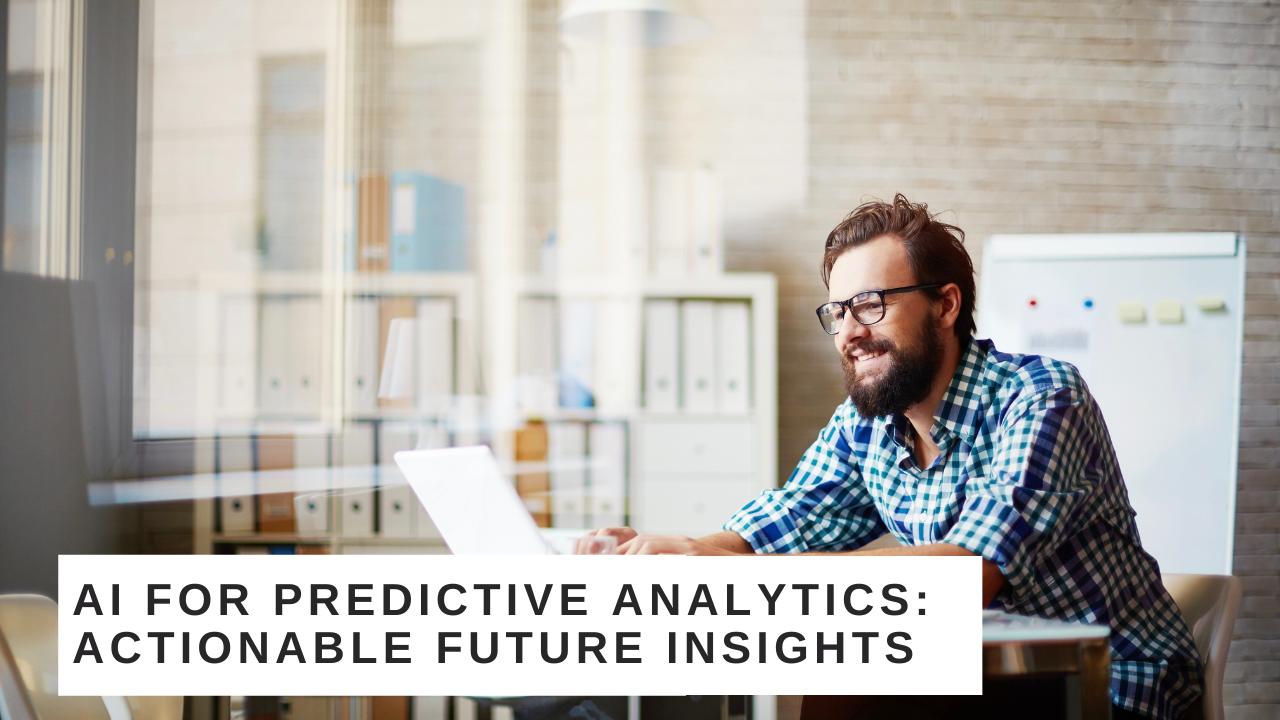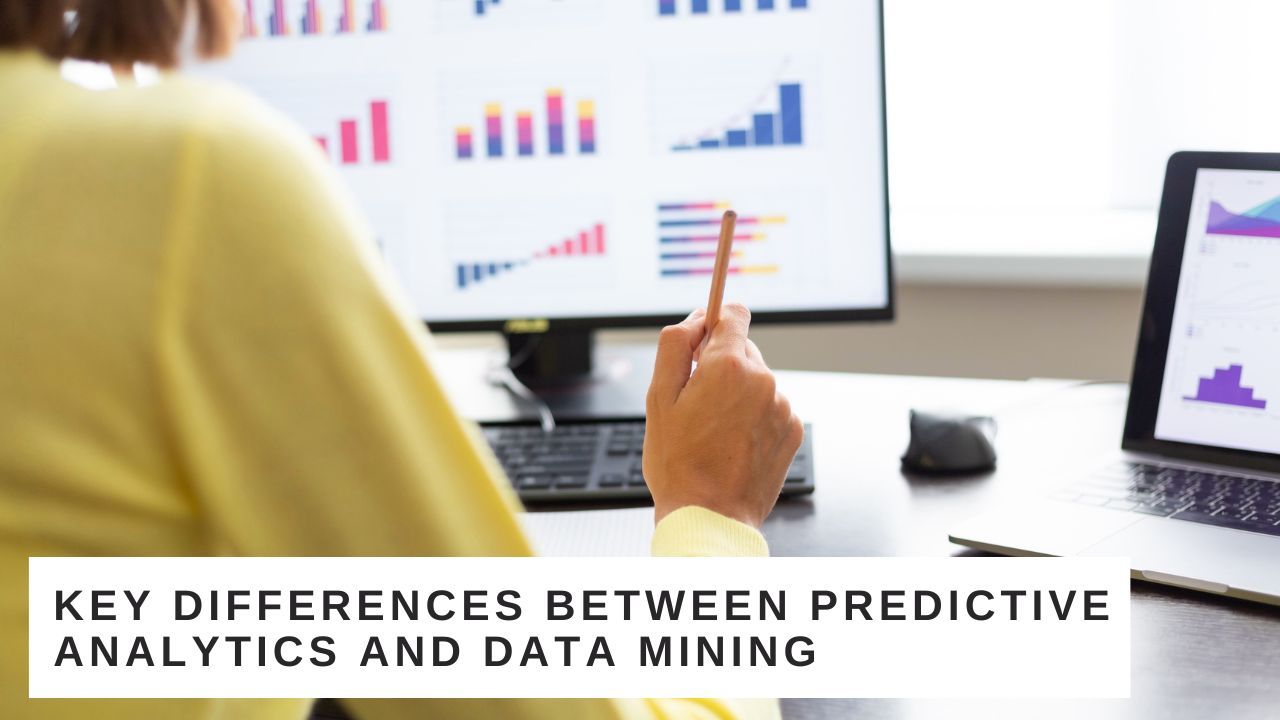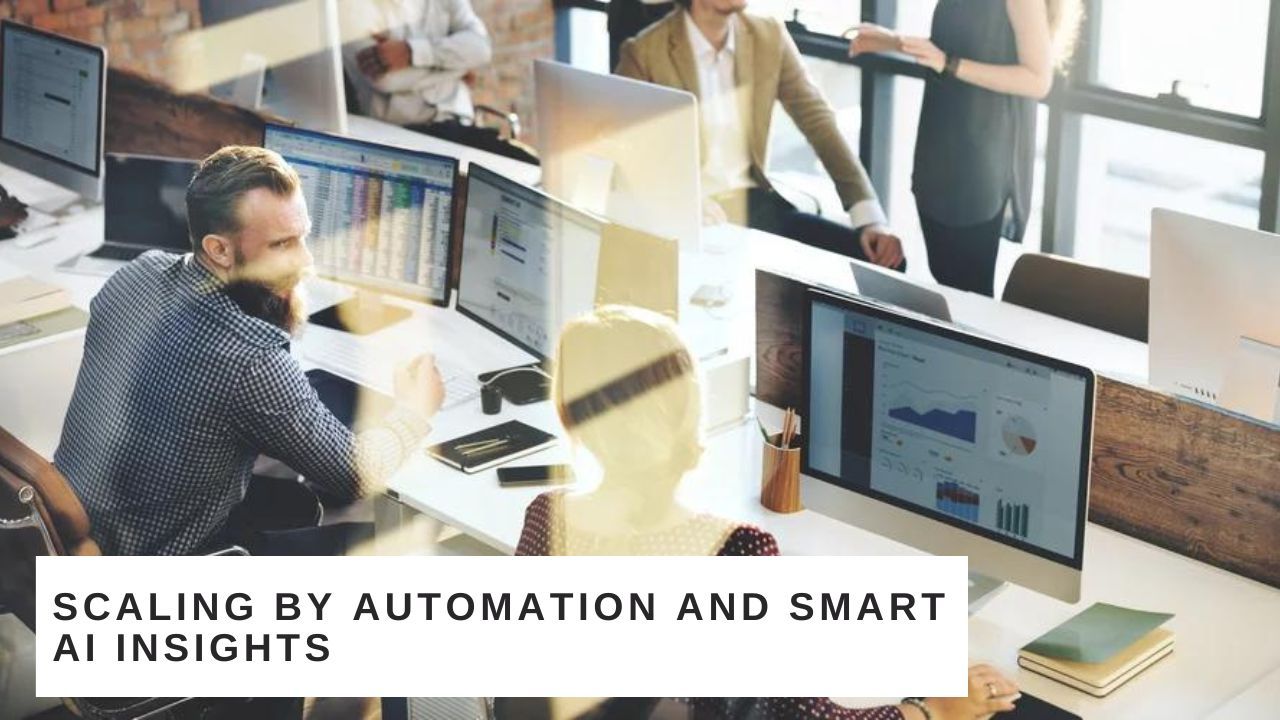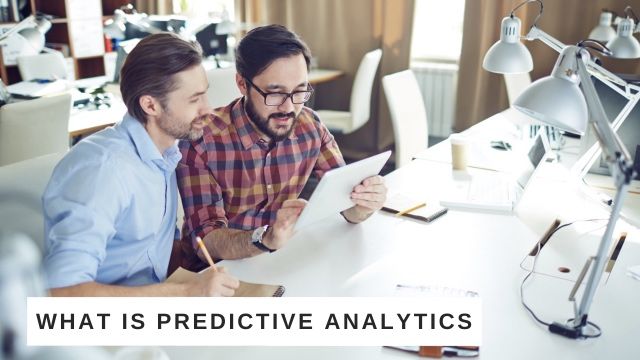AI For Predictive Analytics: Actionable Future Insights
8 minutes read
Table of Contents
- AI For Predictive Analytics: Actionable Future Insights

AI is everywhere in the modern world, from 77% of the connected devices we use every day to approximately 15% of enterprises that use it in their business operations.
The number of applications for AI is equally staggering. It can do anything from making you a cup of coffee while you're in another room to find patterns in massive sets of data.
AI analytics is a growing but promising field. These systems analyze large amounts of data at a rapid pace. This helps businesses make timely, accurate decisions.
Read this guide to learn the potential of AI predictive analytics.
What Is Artificial Intelligence?
There are several types of AI.
Strong AI, also known as general artificial intelligence, can find a new solution to a problem when presented with unfamiliar tasks.
Weak or narrow AI is designed for a single purpose such as working as a smart speaker. It can't learn to do anything new.
AI systems are also categorized by their level of memory. Reactive AI can only act to present experiences, but limited memory AI uses stored data from past experiences to make decisions.
Strong AI's ability to learn comes from a process known as machine learning. It allows an AI to teach itself to handle new challenges and process new information.
Strong AI may also have computer vision or speech recognition capabilities that allow them to recognize, analyze and respond to images and human speech.
Strong AI has the most potential because it can be trained to do almost anything. This includes the use of AI for data analytics.
What Are the Different Types of Analytics?
In general, analytics are systems used to gather, store, and analyze information. There are several types, including data, big data, predictive analytics, and sentiment analysis.
Each form of analytics is essential for different business functions.
Data Analytics
Data analytics, also known as data analysis, involves extracting and categorizing data to identify and analyze behavioral patterns. It's most common in business-to-consumer or B2C applications.
An example of data analysis is social networking websites. They use data to determine user preferences, community interests, demographic information, and more. The data helps them determine and adapt to user trends.
Big Data Analytics
Big data analytics involves analyzing large volumes of data. It requires sophisticated software because of the wide range of sources it uses to gather information. These include:
- Social networks
- Videos
- Digital images
- Sensors
- Sales transaction records
Big data analytics focuses on finding patterns in data that guide business decisions.
Predictive Analytics
Predictive analytics include a range of analytical and statistical techniques. Some of these methods include multivariate analysis and time-series and advanced regression models.
They create models used to predict future behavior. These models receive a score, and the higher it is, the more likely the event or behavior is to occur.
Credit bureaus use predictive analytics every day. They look at their client's income, loan balances, credit history, and other data to determine their credit score based on how likely they are to pay off their debts.
Predictive analysis has several benefits. It makes it easier to target and communicate with current and future clients. It makes it easier to predict future events and make smart business decisions to prepare for them.
Sentiment Analysis
Sentiment analysis helps decipher the meaning of customer feedback. It's used to determine whether the content of their feedback is genuine, what was happening on the day they left it, and other related factors.
Sentiment analysis is a valuable sector of predictive analytics. It helps businesses determine how customers view their products and whether a customer is likely to return.
Early AI struggled to perform sentiment analysis because it couldn't understand human speech. The systems are getting better at sentiment analysis every day thanks to another process known as natural language processing.
This method helps a computer "translate" human communication into a language it can understand. Statistics and models are the most common method, but newer solutions include voice recognition and human translation software.
Why Do Businesses Use Data Analytics?
Companies use your data for several reasons. They may want to improve customer experience, increase cash flow, or gain more data.
Improving the customer experience is a win-win for everyone involved. It keeps them content which leads them to come back and make another purchase.
Data analytics are one of the best ways to ensure your business makes as much money as possible. They lead to higher ROI and more purchases. Also, data brokers or data service providers pay businesses for their customer data.
If you give a business some of your data, you're more likely to give them more. The more information you provide, the better their profile of you will be, and the better they'll be able to customize their marketing efforts to you.

Why Should We Integrate Data?
One of the most difficult decisions for a data analyst is what to do with the data they've gathered. It can seem like a jumbled mess of code when they first receive it.
Data needs to be put into context to be useful. It needs to be integrated into the rest of your business strategies, and there are several methods of doing so.
Native integration involves things like branded images on your products. It's the hardest to integrate because it's difficult to replace or connect to anything else.
Vendor-embedded integration includes licensed third-party code embedded into a product. It includes things like QR codes.
Developer-supplied integration is the development of costly, time-consuming custom code for use in marketing efforts.
These code-based approaches aren't as flexible and can lead to bugs, poor decisions from bad data, and a lack of analytics.
Configuration-based solutions allow a third party to take ownership of all applications and their code and maintenance. You lose control but gain back the time you'd spend on these tasks. It's also more affordable than code-based approaches.
AI platforms can help you integrate your data by identifying patterns within it. This is one of the main purposes of AI platforms and one of the main reasons they're so powerful and popular today.
What's The Connection Between Artificial Intelligence and Data Analytics?
There is a shortage of 1.5 million data analysts in the United States alone. This lack of professionals will force businesses to embrace the switch to AI analytics.
There's a great deal of potential for using AI for business analytics. It's quick, convenient, effective, and accurate.
AI platforms can gather all types of business information in one place. They can contain and manage all of your data, predictive, and marketing analytics. They're the most convenient way to use and store all the information your business needs.
Predictive analytics influence business decision-making because they help determine which scenarios are the most likely to occur. AI prediction algorithms make these decisions easier to make. They also provide more accurate data that leads to better results.
AI prediction algorithms allow businesses to look at an almost infinite number of potential scenarios. They also analyze data at high speeds and provide real-time reports. This increases efficiency and reduces the likelihood of a tragic mistake.
Smart AI can learn from its mistakes and help businesses do the same. You can analyze the changes it makes when facing a new but similar scenario to see what you can change.
What AI Tools Do I Need?
It's barely an exaggeration to say that AI systems are limited only by the imagination of the programmers who create them. Technology develops at such a rapid pace that tools we never could have dreamed of today will be on the market in the next few decades.
You are also the only one limiting the ways that your business can use AI. Look for one that fits your needs and try it out.
When searching for an AI tool, look at its uses, price, and reputation. These are the best ways to determine if your investment in the technology will be worthwhile.
Data analytics is one of the best uses of an AI system, but remember that it's not the only thing they can do. Try to find a system that saves you the most time by performing as many different tasks as possible. If not, look for one that can store and analyze several different types of data.
AI adoption is rapidly increasing but not yet universal. This means the systems can still be expensive, and you must choose one that fits your budget.
Look at the reputation of any AI software and its provider before purchasing. Find one with a demonstratable track record from a source you can trust.
Where Can I Find The Right Data Analytics Tool?
Artificial intelligence has transformed into a vital tool that's present in almost every device. It's slowly being accepted by businesses as a valuable tool for predictive analytics.
AI platforms are more accurate and efficient when noticing patterns in data. This allows them to analyze the likelihood of several situations at once. They rarely fail but can learn from their mistakes when they do.
Put It Forward can help you embrace the potential of AI-integrated software for all of your business functions. Get a demo of our data analytics tools today.

Elsa Petterson
Partner success manager @ Put It Forward




